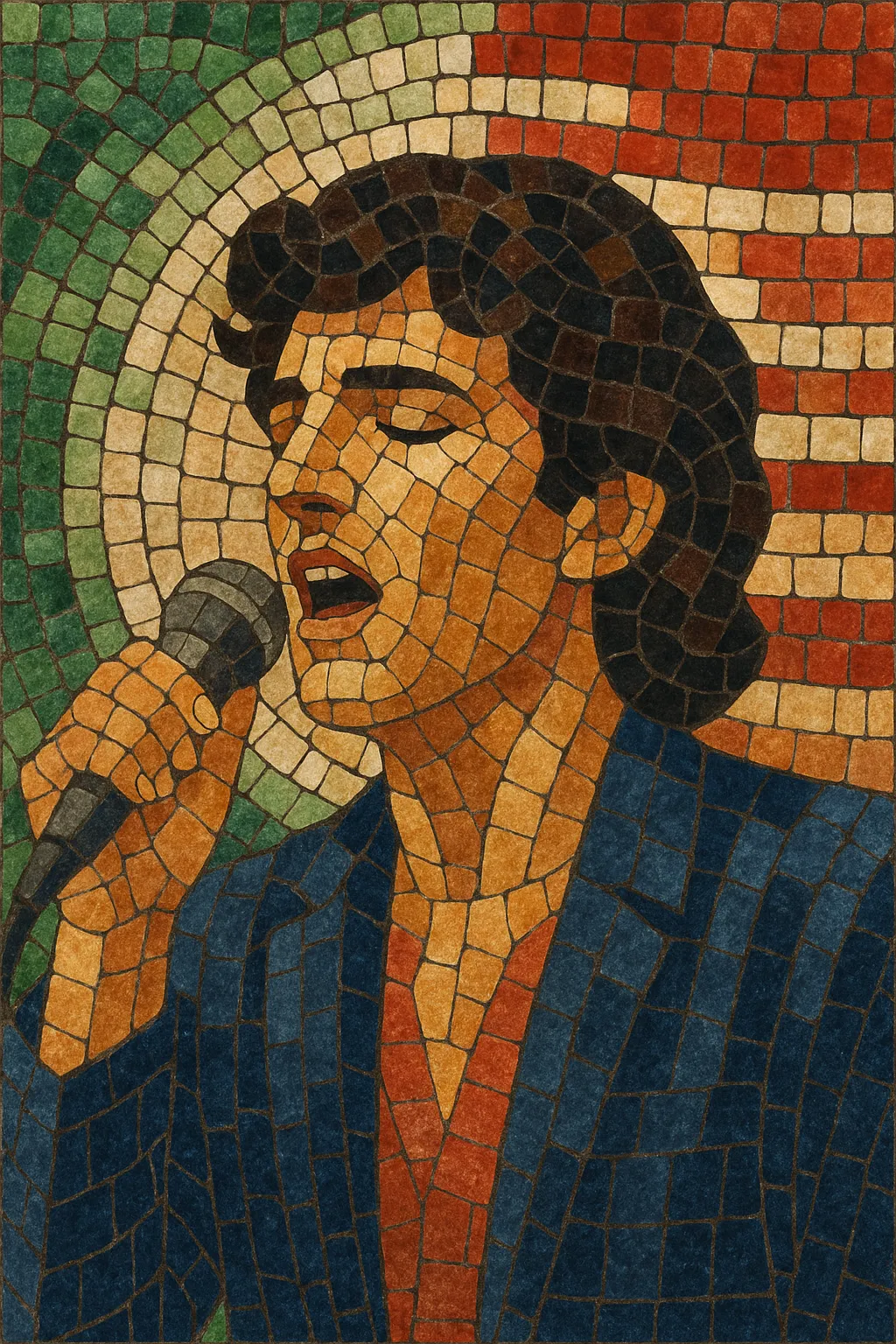Italo pop is the mainstream tradition of Italian popular music that blends the melodic canzone heritage with contemporary pop songwriting and production.
Characterized by emotive vocals, memorable choruses, and polished arrangements, Italo pop spans torch ballads, mid‑tempo soft rock, and dance‑leaning radio hits. While rooted in Italian language and lyrical romanticism, the genre has continually refreshed itself, absorbing elements from beat, rock, synth‑pop, and adult contemporary across decades.
Its identity is strongly tied to major song festivals (especially Sanremo), television variety shows, and international crossover success through Spanish- and English-language versions by Italian stars.
Post‑war Italy saw the formalization of a national pop style via the Sanremo Music Festival (founded 1951). Drawing on the melodic tradition of the canzone napoletana and the smooth polish of traditional pop and chanson, early Italo pop emphasized expressive singing and orchestral arrangements. Global breakthroughs like Domenico Modugno’s “Volare (Nel blu dipinto di blu)” (1958) signaled an international appetite for Italian melody. In the 1960s, beat and rock and roll flavors entered the mainstream, modernizing rhythms and performance style.
The 1970s brought a surge of sophisticated songwriting and studio craft. Big-voiced stars and cantautori coexisted on charts, while TV variety shows amplified nationwide hits. By the 1980s, gleaming synths and drum machines gave many Italo pop records a contemporary sheen alongside the rise of related scenes (e.g., Italo disco). Artists like Umberto Tozzi and Toto Cutugno found pan‑European success; Italian entries also performed strongly at Eurovision.
From the 1990s, Italian pop achieved sustained international reach. Eros Ramazzotti, Laura Pausini, and others recorded Spanish (and sometimes English) versions, becoming staples across Europe and Latin America. Production aesthetics aligned with global adult contemporary and soft rock while preserving the centrality of melody and vocal expressivity.
Italo pop remains a living mainstream, integrating modern pop, R&B, and electronic textures while staying lyric‑ and melody‑first. Streaming and renewed Sanremo visibility continue to launch crossover hits. Contemporary stars balance radio‑ready hooks with the genre’s classic themes of love, longing, and uplift.
Use clear verse–pre‑chorus–chorus structures with a memorable, repeatable hook. Common tempos range from 70–100 BPM for ballads and 100–125 BPM for mid‑tempo radio pop.
Favor diatonic, singable chord progressions (I–V–vi–IV; ii–V–I; I–vi–IV–V) with tasteful secondary dominants and occasional borrowed chords for lift. Melodies should be lyrical and emotive, with a strong, arching chorus that resolves satisfyingly.
Center the vocal: warm, expressive delivery with clear diction. Write in Italian (or bilingual versions) focusing on love, nostalgia, hope, and personal storytelling. Use vivid imagery and memorable refrains; allow room for dynamic build into the chorus.
Keep rhythm sections unobtrusive but supportive: steady drum kit or programmed pop drums, bass that outlines chord roots with melodic fills, and light percussion for movement. For contemporary tracks, subtle four‑on‑the‑floor or syncopated pop grooves work well.
Blend classic and modern: piano, acoustic/electric guitars, string pads or real strings for lift, and tasteful synths. In ballads, use orchestral swells and countermelodies; in upbeat songs, layer clean guitars and synth arpeggios. Prioritize vocal presence, wide stereo choruses, and a polished, radio‑ready mix.


